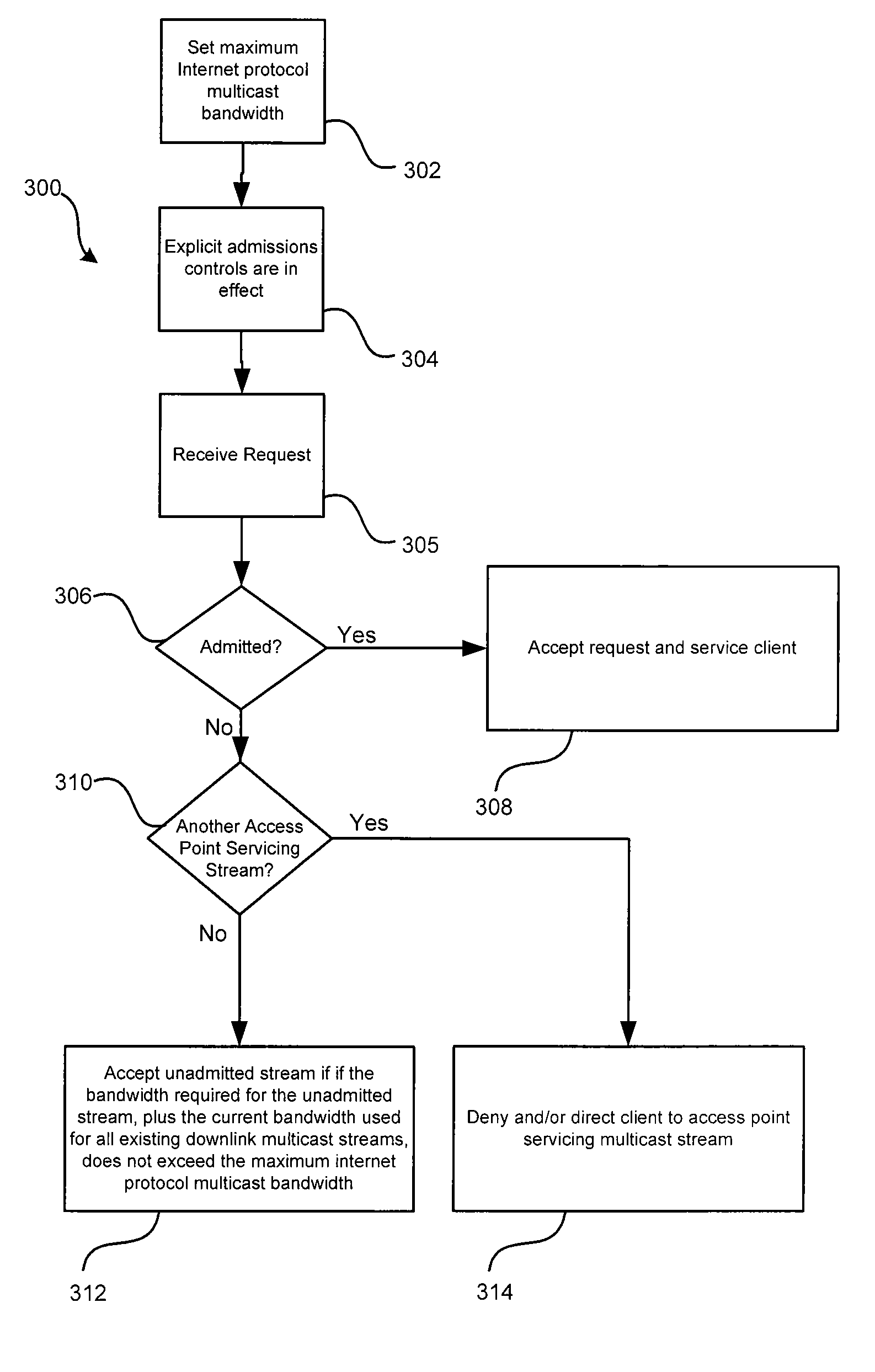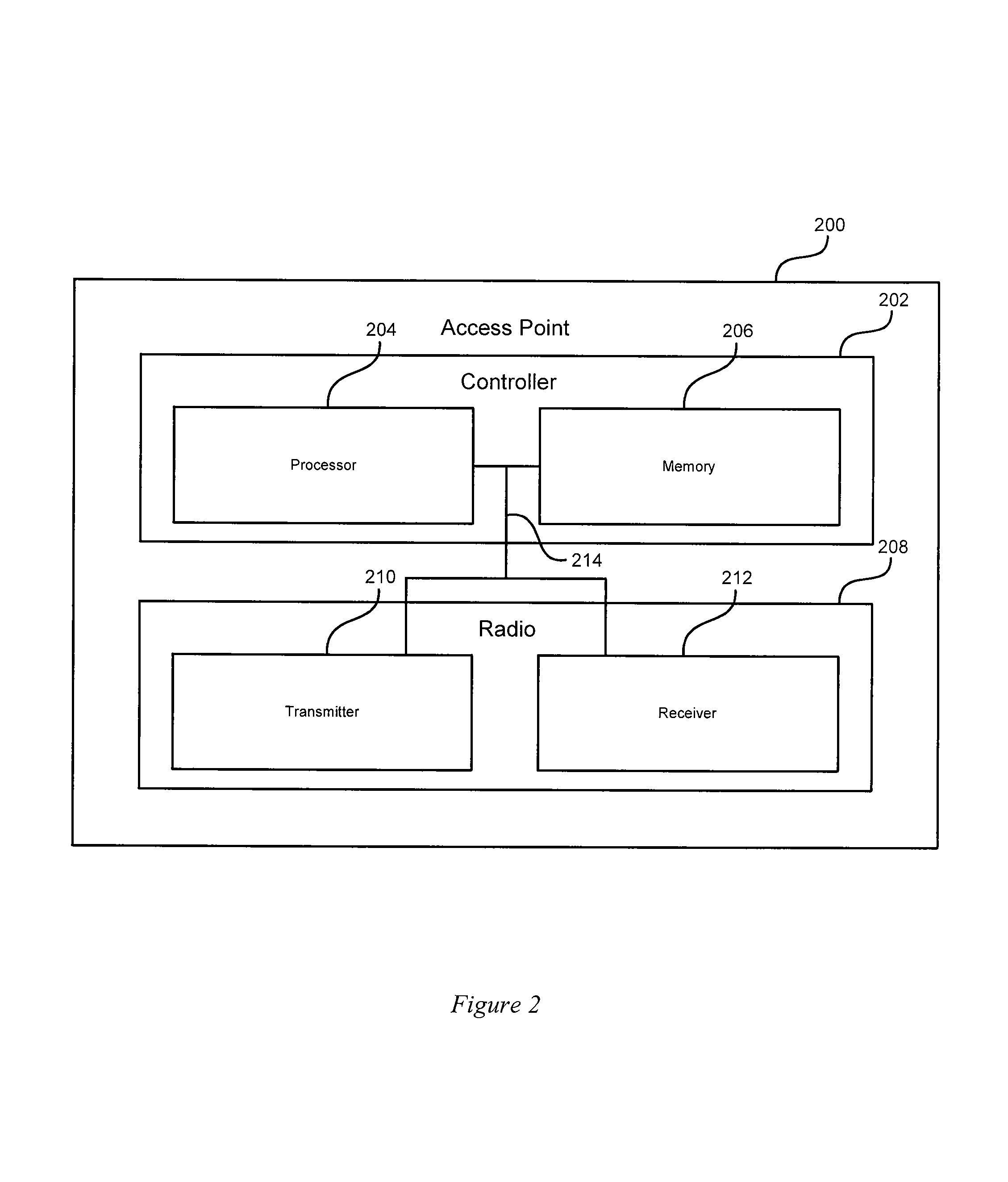Method for multicast load balancing in wireless LANs
a wireless lan and load balancing technology, applied in the field of wireless networks, can solve the problems of consuming excessive bandwidth, consuming high bandwidth, and potentially starving unicast streams, and achieves the effects of increasing the available bandwidth of the remaining access points, high bandwidth, and high bandwidth
- Summary
- Abstract
- Description
- Claims
- Application Information
AI Technical Summary
Benefits of technology
Problems solved by technology
Method used
Image
Examples
Embodiment Construction
[0023]In a high density access point network, reducing the access point cell size, thereby reducing the number of clients in each cell, increases the bandwidth for a client. In a typical high density installation, low density, low bandwidth Institute of Electrical and Electronics Engineers (IEEE) 802.11b / g access points with relatively greater range provide “umbrella channels” that cover the entire installation, while high bandwidth, short range IEEE 802.11a access points provide small “high bandwidth overlay cells” in selected “Hot Spot” areas, such as in conference rooms, offices, etc. Multiple APs may be installed to cover the same area to further increase the available bandwidth in a Hot Spot Area. For example, in a conference room, installing multiple access points with overlapping coverage areas on different radio channels can increase the total available bandwidth. The umbrella coverage enables an IEEE 802.11b / g client or a dual mode 802.11g / 802.11a client to roam seamlessly ...
PUM
 Login to View More
Login to View More Abstract
Description
Claims
Application Information
 Login to View More
Login to View More - R&D
- Intellectual Property
- Life Sciences
- Materials
- Tech Scout
- Unparalleled Data Quality
- Higher Quality Content
- 60% Fewer Hallucinations
Browse by: Latest US Patents, China's latest patents, Technical Efficacy Thesaurus, Application Domain, Technology Topic, Popular Technical Reports.
© 2025 PatSnap. All rights reserved.Legal|Privacy policy|Modern Slavery Act Transparency Statement|Sitemap|About US| Contact US: help@patsnap.com



